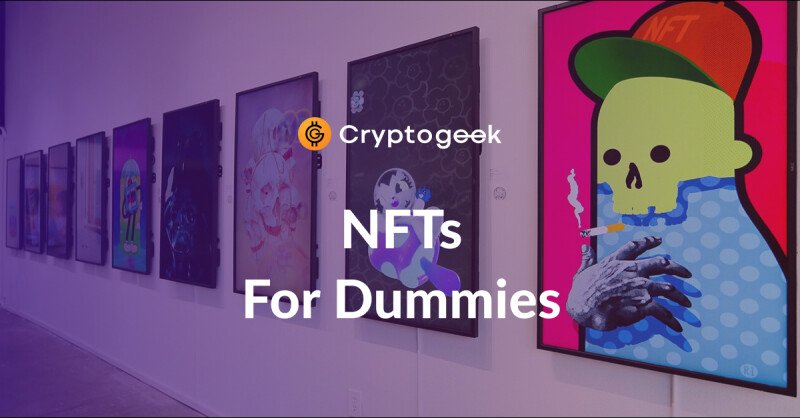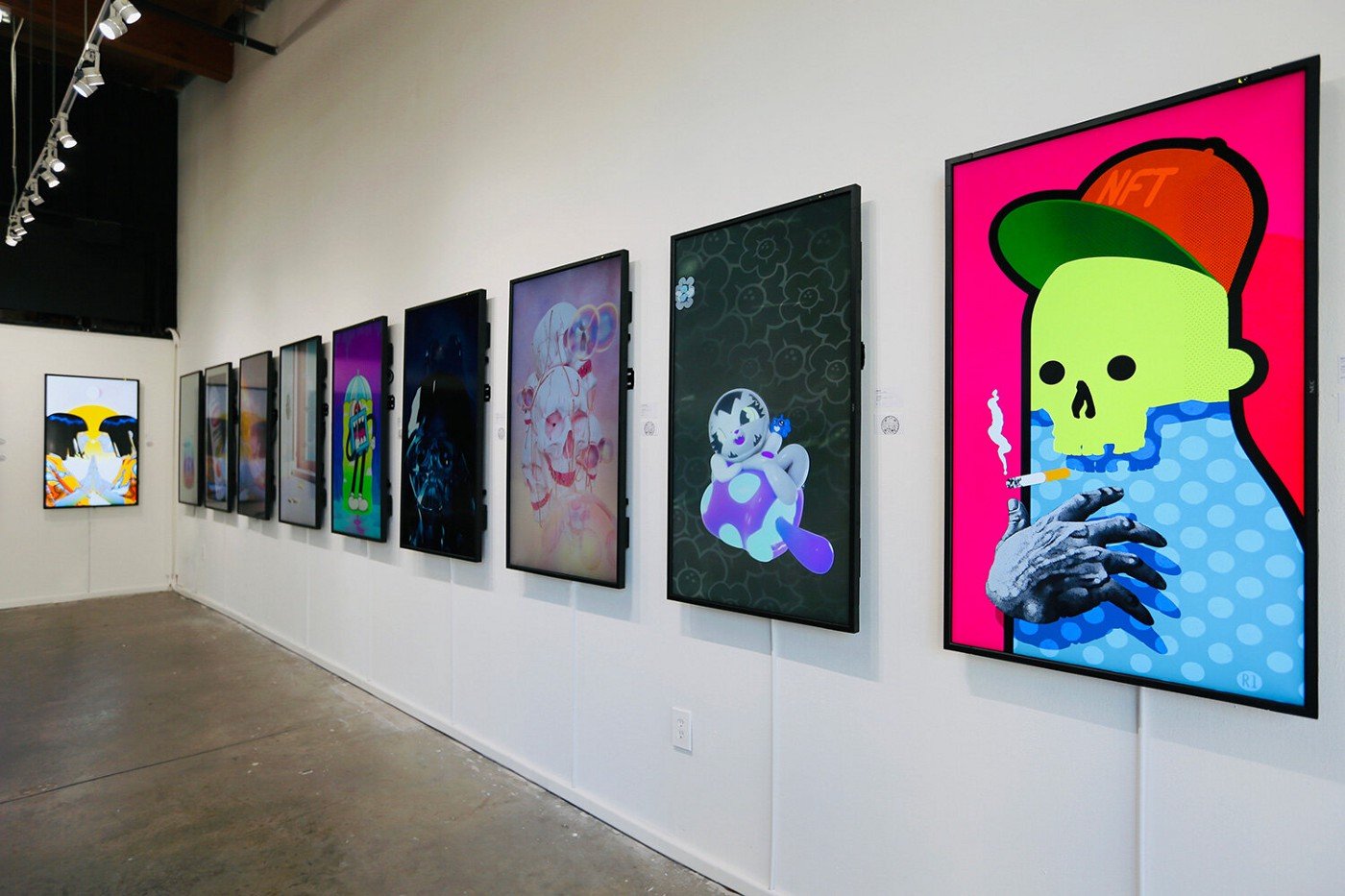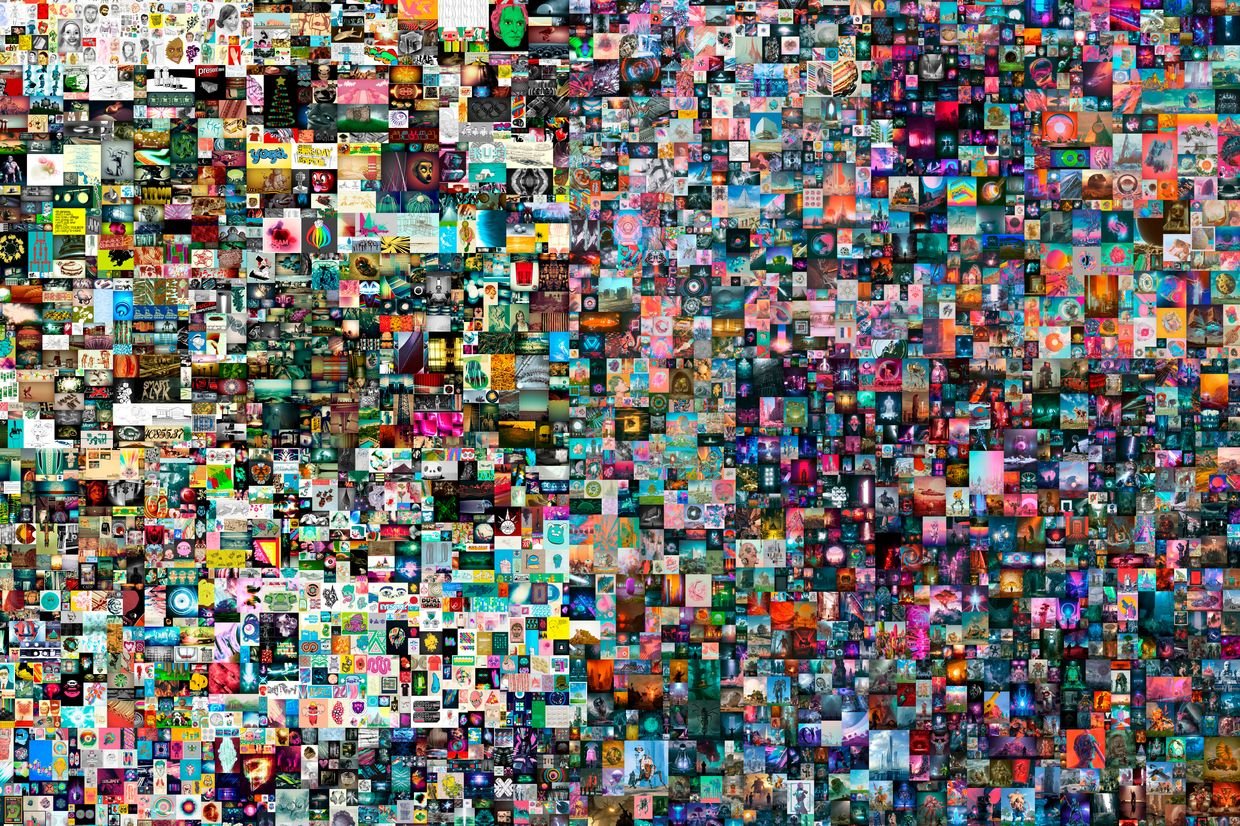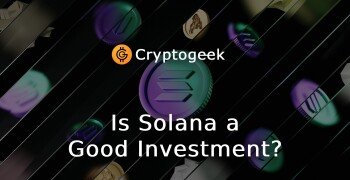NFTs For Dummies | A Conclusive Guide


The acronym NFT stands for a non-fungible token or unique asset that cannot be fully replaced by any other token. It is a kind of currency that has only one unit. NFTs come in diverse forms, including audio, videos, images, concert tickets, virtual collectibles, in-game items, character skins, and other types of information pieces. Some NFTs are sold for charity's sake. All these tokens are part of the crypto market, and their prices are changing. Experienced NFT traders can earn via trading these tokens. The artists minting (creating) new NFTs have chances to profit in this market. This article will tell you everything you need to know on the topic. That's why we have called it "NFTs For Dummies." Please read it to learn the basics of the NFT market and related stuff.
- Introduction
- How do NFTs work?
- What is an NFT artwork?
- How do I buy an NFT?
- How to Create an NFT?
- How much does it cost to create and sell an NFT?
- What are NFT Royalty Fees?
- What are some of the top most expensive NFT's out there?
- Afterword
Introduction
NFTs are blockchain-based assets characterized by uniqueness. The code of such assets is made so that you can't have two or more units of the same NFT. Regular cryptocurrencies (fungible tokens), on the contrary, are interchangeable. Traders buy and sell NFTs at contract prices.
Some NFTs represent offline world items (property, pieces of art, etc.), while others are self-contained. The real-world objects represented by NFTs are referred to as "tokenized." It is considered that tokenized property is safer to sell and buy, thanks to smart contracts and the immutable nature of distributed ledgers. NFTs can serve as digital IDs or ownership docs. High-value NFTs can have several owners, each owning a fraction of the token (and a respective fraction of a physical object represented by the token, if it exists). Another benefit is making things easier for buyers and sellers. If we speak about the property market, buying and selling NFTs is a drastically less complex process than regular real estate trading.
The first time NFTs got serious coverage was the 2017 Crypto Kitties boom. Crypto Kitties is an online game where players breed and trade virtual kitties. The pets are Ethereum-based NFTs. In 2017, some of them became incredibly expensive, and the number of in-game transactions soared, slowing down the entire Ethereum network.
The next big news about NFTs hit only in 2021 when several NFTs made by celebs and artists were sold for millions of dollars. For instance, Jack Dorsey sold a tokenized version of the first tweet ever for an equivalent of $2.9 million. Some of the NFTs caused controversies. For example, The Bored Ape Yacht Club's collection was another hot topic. Many people voiced their opinion that the collection's images are ugly and overpriced. The celebs were promoting the collection, although thousands of Bored Ape NFTs got stolen. However, in 2021, NFTs cemented their place in the crypto market and informational field and became an essential part of the crypto industry.
How do NFTs work?
NFTs were created on the ERC721 basis. So they are the product of the Ethereum ecosystem. Every ERC721 token bears little data that includes the token owner, security, and the metadata needed for the circulation of this token. The ERC1155 standard enhanced this technology, decreasing use costs and making it possible to associate several tokens with the same smart contract. Introducing NFTs became the next step that made tokens unique and indispensable.
All the data associated with each NFT is stored on-chain and is not subject to corrections. It makes NFTs fraud-resistant. From the end-user perspective, the only essential difference from regular cryptocurrencies is that NFTs are one-of-a-kind tokens existing in a single exemplar. They are blockchain-based; people can trade them and store them in crypto wallets.
What is an NFT artwork?
NFT artwork is a token confirming one's ownership of the original digital piece of art or a tokenized digital copy of a work of art. The first owner is an artist who minted an NFT. The artist's right is to distribute their NFTs the way they like.

The NFT artwork phenomenon's novelty is that it removes all or at least some intermediaries between the artists and the buyers of their art. The artists gain more control over the ways and conditions of distribution, including price. More than that, it is possible to add special conditions. For instance, the author can get a commission from every future resale of the piece of their art. Also, NFTs provide additional tools for tracking copyright ownership.
Thanks to the metaverse, NFT artworks get new ways of bringing art to the people and people to the art. Visiting virtual galleries and observing artworks hanging on digital walls will probably become habitual in the near future. Sculptures, installations, and performances can take place in virtual environments creating a new experience and exploring new horizons of art perception and exhibition. It's understood that these digital artworks will be a part of the global NFT art market.
As of October 2022, NFTs are not regulated. It allows scammers to mint NFTs based on art made by other people without their consent. If you are interested in buying some NFT artwork, it's important to make sure that you are not dealing with fraud. Visit the artist's social media and see whether or not the artist was announcing/promoting the NFT you want to buy.
How do I buy an NFT?
Ethereum ecosystem is the main ground for an NFTs world as most of these tokens are Ethereum-based. Thus, in most cases, buyers pay for NFTs in ETH. Usually, wallets focused on Ethereum tokens are suitable for storing NFTs. Get one, and you will be able to start buying, selling, and storing NFT collections. Make sure that the wallet you want to use supports NFTs. MetaMask, Coinbase, and Trust Wallet are among the most popular wallets that support NFTs. Of course, you will find more options if you start searching.
As of October 2022, NFTs are sold on numerous specialized marketplaces and on several exchanges that support NFTs (Binance is one of them). The list of most famous NFT marketplaces won't be complete without such names as OpenSea, Nifty Gateway, SuperRare, and Rarible. The buying process itself is pretty simple. As soon as you get ETH in your wallet and the wallet supports NFTs, you can choose an NFT on one of the marketplaces and buy it, exchanging your ETH coins for the NFT. The process is intuitive.
How to Create an NFT?
The process of creating NFTs is called minting. You can mint non-fungible tokens using special online platforms. Let's see what the main steps for creating your NFT are.
First off, you should decide which file you want to tokenize. It can be an image, audio, video, GIF, or anything else. Hopefully, you have all the rights to the file you chose.
Then, you should decide which blockchain will host your NFT. The most popular suitable blockchains are Ethereum and Solana. The former uses the ERC-721 standard to store and manage NFT-related data. Ethereum is the dominant blockchain in the NFT sphere. You can mint Ethereum-based NFTs on most platforms, including some marketplaces. The main reservation about the Ethereum-based NFTs is the high fees. Solana is faster and cheaper than Ethereum, but some platforms do not support NFTs based on this blockchain. The other popular blockchains for NFTs include BNB Chain, Avalanche, Polygon, Immutable X, and Flow.
The next step is choosing the platform you will use for minting your NFT. You can mint tokens on universal platforms that can be used for trading your NFT right away. These platforms are OpenSea, Solanart, Binance, etc.
Finally, you can mint your NFT! The process can differ depending on the platform you choose, but in general, it will be like this:
1. Conneсt the wallet you chose.
2. Click on the Create button and upload a file that you are going to turn into an NFT (or provide a link to it).
3. Provide all the required info. You should give your NFT a name, and description, attach some extra features, and so on. Pick the proper blockchain.
4. Click on Create. That's it! Now, it's ready for sale.
5. The final step is listing your NFT for sale on the preferred marketplace.
How much does it cost to create and sell an NFT?
Some platforms won't charge you anything for minting an NFT. If they do, the price may vary. However, you will likely not pay a dime and will just put your NFT for sale at the specified price. Also, you should select the time frame for your sale.
Even if you mint the NFT for free, you will spend some money on transaction fees as listing usually requires signing some transactions in your wallet. Depending on the selected blockchain, these fees can be negligible or high. When you sell your NFT, the fee you pay can reach from 1% to 3% of the amount you get.
What are NFT Royalty Fees?
In the future, you can cover your expenses associated with minting and selling your NFT via royalty fees. These fees make up the reward you get for each subsequent sale of your NFT. Usually, this fee is 10%.
What are some of the top most expensive NFT's out there?
As of October 2022, the most expensive NFT is the PAK's artwork called "The Merge." It was sold in December 2021 through the Nifty Gateway for a whopping $91.8 million in crypto. Allegedly, it is the most expensive piece of art by a living artist ever sold.

The previous record-holding NFT was "Everydays: The First 5000 Days" by Beeple (or Mike Winkelmann). It was sold for $69.3 million in the spring of 2021 through a Christie's online auction.

The other PAK's and Beeple's artworks hold the third and the fourth positions in the top of the best sales, respectively. The fifth position is occupied by CryptoPunk NFT #7523, one of the nine alien crypto punks. It was purchased for $11.7 million.

Afterword
As you can see, the NFT market keeps on booming. It has the potential for security improvements and further expansion. Investing in NFTs can seem to be gambling, but if you understand the market dynamics and do research, you will be able to benefit from entering the NFT market. All in all, NFTs are the thing to keep your eye on.









Here are no comments yet. Be the first!